Rising majestically from Morocco’s Atlantic coast, Casablanca offers travelers a wealth of unforgettable places to visit and unique experiences. More than just the setting of a classic Hollywood film, this vibrant metropolis has become a must-see destination for those exploring what to do in Morocco. The city seamlessly blends French colonial architecture with traditional Moorish design, while the stunning Hassan II Mosque—partially built over the ocean—stands as one of the most remarkable things to see in Casablanca.
From wandering through the maze-like alleys of the Old Medina to sipping mint tea in Art Deco cafes, visitors will discover countless things to do in Casablanca that showcase its intoxicating mix of old-world charm and contemporary energy. Here, ancient traditions thrive alongside modern luxury, creating an atmosphere that’s uniquely Moroccan yet distinctly cosmopolitan—perfect for travelers seeking both popular attractions and unique things to do in Casablanca.

Hassan II Mosque
The Hassan II Mosque stands as one of the world’s largest mosques, featuring a 210-meter-high minaret that directs a laser beam toward Mecca. Built partially over the Atlantic Ocean, this architectural masterpiece combines Moroccan traditions with modern elements like a retractable roof and heated floors.
King Hassan II commissioned the mosque in 1986, and construction finished in 1993, showing Morocco’s commitment to its heritage. The building accommodates thousands of worshippers while offering stunning ocean views.
Non-Muslim tourists can join guided tours daily, except Fridays. Remember to dress modestly – covering shoulders and knees – and remove shoes before entering. Early morning visits offer the best photography opportunities and smaller crowds.
La Corniche

La Corniche stretches along Casablanca’s Atlantic coast, offering a picturesque setting for waterfront strolls. This vibrant area features luxury hotels, upscale restaurants, and beach clubs where visitors can bask in the sun or swim in ocean waters.
The promenade comes alive at sunset when locals and tourists gather to watch the sun dip below the horizon. Nearby, you’ll find popular landmarks like the Corniche Mosque and Morocco Mall. The area’s cafes serve traditional mint tea and local dishes, making it an ideal place to spend an afternoon people-watching or enjoying seaside dining.
Old Medina of Casablanca

The Old Medina stands as Casablanca’s historic heart, where narrow streets wind through traditional Moroccan markets and local life. Street vendors call out their wares while artisans craft jewelry, textiles, and leather goods in small workshops passed down through generations.
Visitors can wander the bustling alleys filled with spice merchants, food stalls, and craft shops. Bargaining is expected – start at half the asking price and negotiate with a smile. Morning hours bring the freshest produce and smaller crowds, while afternoons buzz with local activity.
For authentic purchases, look for handwoven carpets, metal lanterns, and locally-made ceramics. The Habous Souq Market offers additional shopping opportunities. Stay alert with valuables and consider hiring a local guide to access hidden corners and cultural spots typically missed by tourists.
Habous Quarter (New Medina)
The Habous Quarter shows off a striking combination of Moroccan and French colonial architecture. Built in the 1930s, this district features organized streets lined with white buildings and ornate archways, making it easy to walk around compared to the Old Medina.
Local artisans sell handmade leather goods, brass items, and traditional clothing in small shops. The Habous Souq Market offers fresh olives, dates, and aromatic spices. Stop by the traditional bakeries for warm Moroccan bread or relax at a street café with mint tea while watching daily life unfold in the peaceful courtyards.
Mahkamat al-Pasha
The Mahkamat al-Pasha stands as a striking example of Moorish-Andalusian architecture in Casablanca. This historic civic building features detailed wooden carvings, intricate geometric patterns, and traditional tilework that adorn its walls and ceilings. The structure served as both a courthouse and reception hall for important ceremonies.
While interior access may be limited to specific times, the building’s exterior offers excellent photo opportunities. The best lighting for photography occurs during early morning or late afternoon. When visiting, take time to notice the Islamic calligraphy, cedar wood details, and zellij mosaics that make this building a local landmark of Moroccan craftsmanship.
Mohammed V Square
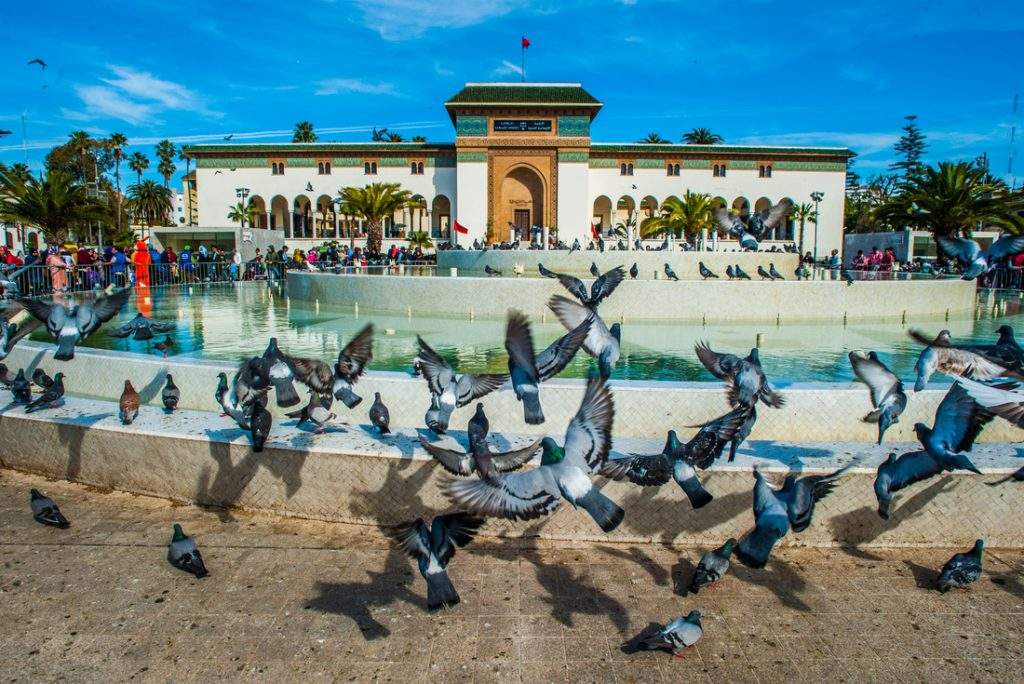
Mohammed V Square sits at the heart of Casablanca, where locals gather around its central fountain under the watchful eyes of countless pigeons – earning its nickname “Pigeon Square.” The space radiates French colonial influence through its surrounding architecture, including the grand Wilaya building and courthouse.
The square buzzes with activity throughout the day as residents and tourists pass through. Small cafes line the edges, making perfect spots to sip coffee while taking in the atmosphere. Visit in the early evening when the buildings glow in warm light and street performers often add music to the scene. The nearby local landmarks and attractions offer shaded benches for those seeking a quiet moment amid city life.
Rick’s Café
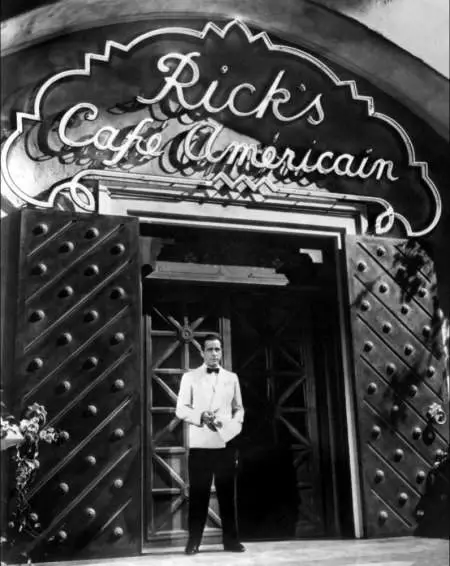
Created as a tribute to the 1942 film “Casablanca,” Rick’s Café brings the silver screen to life in a restored colonial mansion. The venue features curved arches, palm plants, and brass fixtures that transport visitors to the 1940s era.
Live piano music fills the air nightly, with local musicians performing jazz standards as guests enjoy traditional Moroccan dishes and international cuisine. The menu changes seasonally, highlighting fresh local ingredients in both classic and contemporary preparations.
Make dinner reservations at least one week ahead, particularly for weekend evenings. The best times to visit are weekday evenings between 7-9 PM, when the atmosphere matches the romantic setting of the famous film.
Villa des Arts
Located in an art deco building from the 1930s, Villa des Arts stands as Casablanca’s main art institution. The gallery presents both contemporary and classical art exhibitions in its bright, well-lit spaces.
The historic structure maintains its original architectural details while housing rotating displays of Moroccan and international artists. Multiple exhibition rooms spread across two floors allow visitors to view various artistic styles and mediums.
Visit during weekday mornings for smaller crowds, and check the gallery’s calendar for special exhibitions. Photography is allowed in most areas, and the staff offers insights about current displays. Art enthusiasts should plan 1-2 hours to fully take in the collections.
Arab League Park
Arab League Park provides a peaceful green space in central Casablanca. Palm-lined walkways wind through well-maintained gardens, offering shaded benches and quiet corners perfect for reading or people-watching.
Visitors can enjoy morning walks along the landscaped paths, take photos by the fountains, or spread out a blanket for an afternoon picnic. Local families gather here during weekends, creating a lively yet relaxed atmosphere.
The best times to visit are early morning (7-9 AM) when the air is cool and crisp, or late afternoon (4-6 PM) when shadows lengthen and temperatures drop. The park’s local landmarks and attractions make it an ideal rest stop while touring nearby attractions.
Sacred Heart Cathedral
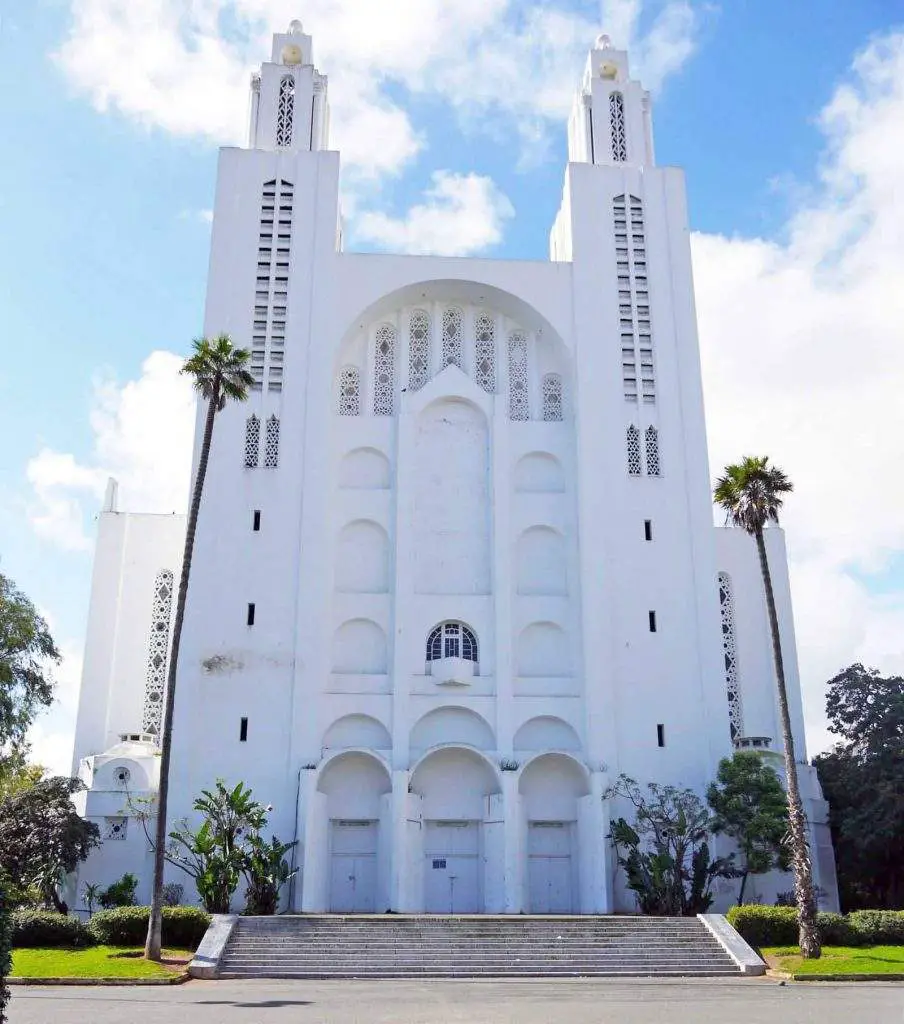
The Sacred Heart Cathedral rises from Casablanca’s skyline with its striking white Neo-Gothic design. Built in the 1930s, this architectural landmark features magnificent stained-glass windows that cast colorful patterns across its interior spaces.
While no longer an active church, the building remains open to visitors. The interior displays a blend of European and Moroccan architectural elements, with high vaulted ceilings and intricate stonework. The rooftop offers panoramic views of the city.
Visit between 9 AM and noon for optimal lighting conditions. Photography is permitted inside and outside the building. A small donation helps maintain this historic structure. The cathedral sits near other local landmarks, making it easy to combine with other sightseeing stops.
United Nations Square

United Nations Square acts as a vital connection point between Casablanca’s Old Medina and its modern districts. The bustling plaza fills with locals going about their daily routines, creating an authentic snapshot of city life.
Street performers and vendors add character to the space throughout the day. Visitors can watch trams pass by, observe locals meeting for coffee, or photograph the mix of colonial and contemporary buildings that frame the square.
Evening hours bring a special atmosphere as the area lights up and residents gather. Consider visiting between 4-7 PM when the square’s energy peaks. Several cafes around the perimeter offer good vantage points for taking in the scenes of urban Moroccan life.
Central Market (Marché Central)
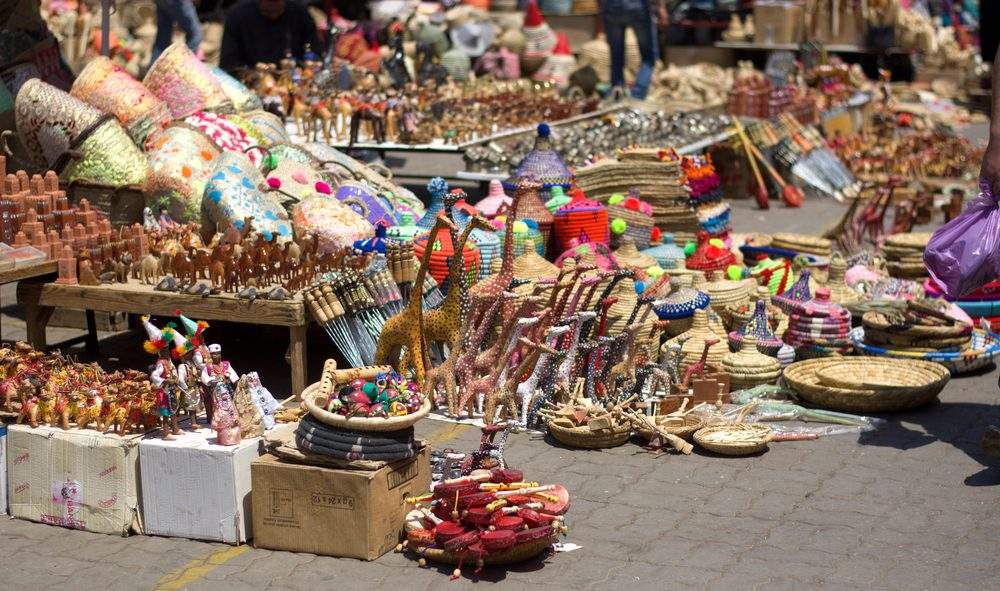
The Central Market stands as a foodie’s paradise in downtown Casablanca. Fresh seafood displays, aromatic spice stalls, and local produce fill this covered marketplace. Fishmongers present their daily catches while vendors showcase traditional Moroccan ingredients.
Start your visit early morning when products are freshest. Try local specialties like grilled sardines, tagines, or fresh-baked bread. Most vendors welcome price negotiations – start conversations with a friendly “Salam” and take time to build rapport.
The market buzzes with activity between 8-11 AM. Bring small bills for purchases and ask vendors about cooking tips for authentic Moroccan dishes. Consider joining locals at small food stalls where chefs prepare meals using market ingredients.
Royal Palace of Casablanca
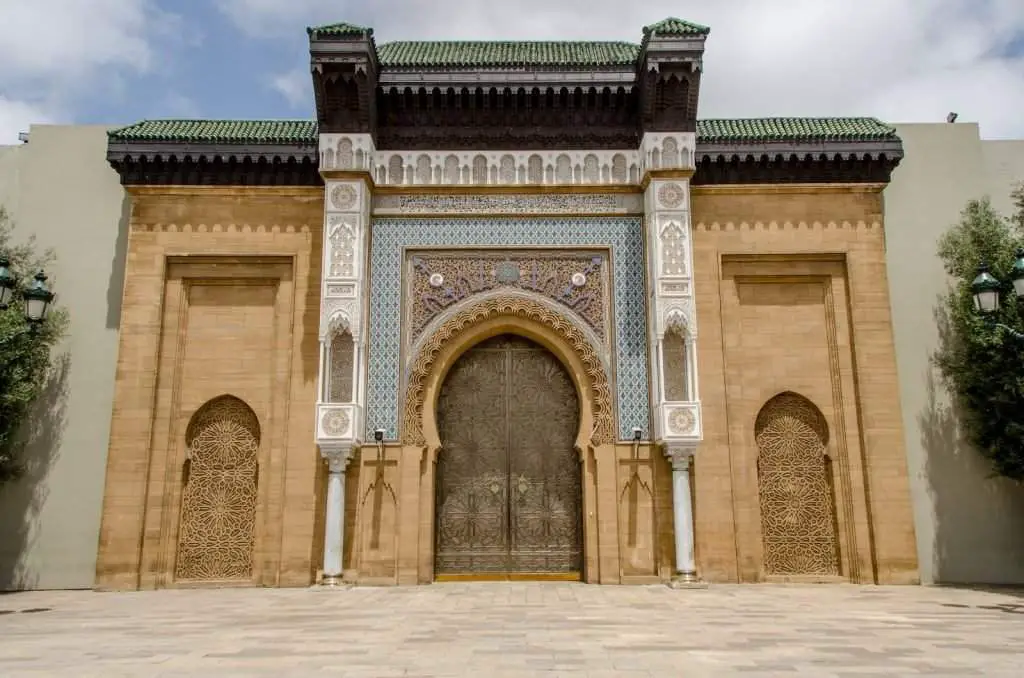
The Royal Palace of Casablanca presents an impressive exterior with traditional Moroccan architecture, featuring ornate gates and high walls adorned with detailed craftwork. While the interior remains closed to the public as an official residence of the King of Morocco, visitors can admire the palace’s grand entrance and surrounding gardens.
The best viewing times are mid-morning when sunlight highlights the intricate details of the façade. Remember to maintain a respectful distance from the palace gates and follow security guidelines. Guards monitor the area constantly, so photography should focus on the main entrance and outer walls. The palace grounds offer glimpses of manicured gardens and traditional design elements that reflect Morocco’s royal heritage.
Art Deco Architecture Walking Tour

Boulevard Mohammed V showcases Casablanca’s mix of Art Deco and Moorish styles from the 1920s and 1930s. The street features white buildings with decorative elements like rounded corners, geometric patterns, and traditional Islamic motifs.
Several guided walking tours start at Place Mohammed V, passing notable structures like Cinema Rialto and the old post office. Each building tells a story of the city’s colonial past through its distinctive architectural features.
Morning tours offer clear views of building details, while afternoon walks show off shadows on the ornate facades. Local tour operators provide historical context about each structure’s significance and the architects who shaped Casablanca’s skyline. Book through your hotel or tourist office for reliable guides.
Casablanca Port
Morocco’s largest port stands as a key economic center, with cargo ships, fishing boats, and maritime activities creating a busy waterfront scene. The port handles most of Morocco’s international trade, making it a vital link to global commerce.
Visitors can watch ships come and go from several viewing points along the harbor. The port area includes spots where local fishermen bring in their daily catch, adding color to the industrial setting. Several cafes near the port offer front-row seats to maritime operations while serving fresh seafood dishes.
Morning hours provide the best light for photographs of vessels against the water. Keep in mind that some areas require permits for access, so stick to public zones. The port connects to the city’s Habous Souq Market, making it easy to combine with other sightseeing activities.
Museum of Moroccan Judaism
The Museum of Moroccan Judaism holds distinction as the only Jewish museum in the Arab world. Its exhibits showcase Jewish life in Morocco through religious artifacts, traditional clothing, and photographs documenting centuries of Jewish presence in the country.
Visitors can see a recreated synagogue, ceremonial objects, and traditional Moroccan-Jewish costumes. The collection includes ancient Torah scrolls, wedding dresses, and items from daily Jewish life across Morocco’s different regions.
Plan 1-2 hours for your visit. The museum opens Sunday through Friday, closing for Jewish holidays. Photography is allowed in most areas. Maintain quiet and modest dress during your visit. The staff provides insights about specific artifacts and Jewish-Moroccan traditions upon request.
Parc Sindibad

Parc Sindibad offers family entertainment through various rides, attractions, and a small zoo. Children can enjoy carousels, bumper cars, and mini roller coasters while parents relax in shaded areas. The zoo houses local wildlife and farm animals, allowing kids to learn about different species.
The park features clean picnic spots and food vendors selling snacks and refreshments. For the best experience, visit during weekday mornings when crowds are smaller. Purchase tickets online to save money and avoid long lines. The park closes during extreme weather conditions, so check the forecast before your visit.
Habbous Food Market
The Habous Souq Market fills the air with aromas of spices, grilled meats, and fresh-baked pastries. Local vendors proudly display mountains of olives, dates, and honey alongside traditional sweets like almond briouats and sesame cookies.
Visitors can sample Moroccan street food specialties, including tender lamb skewers, fresh flatbreads, and savory tagines. Each stall showcases family recipes passed down through generations.
Come early morning for the freshest selections and smaller crowds. When shopping, start conversations with a friendly greeting and take time to chat with vendors. Many offer samples and cooking tips. Remember to bring cash and small bills – credit cards aren’t widely accepted.
Cultural Music and Dance Shows
Traditional Moroccan performances fill Casablanca’s venues with rhythmic drums, string instruments, and graceful dancers. Local theaters and cultural centers present authentic shows featuring Gnawa music, characterized by African rhythms and spiritual songs, alongside Chaabi folk music that gets audiences moving.
Performance spaces range from intimate restaurants to grand theaters, with artists wearing colorful traditional costumes. Many shows include audience participation, teaching basic dance steps and drum patterns.
Contact your hotel concierge or the tourist office for current performance schedules. Book seats at least one day ahead, particularly for weekend shows. Most venues open their doors 30 minutes before performances start, letting guests settle in with mint tea and Moroccan pastries.
Cooking Classes
Moroccan cuisine comes alive in Casablanca’s cooking classes, where local chefs share traditional recipes and techniques. Participants learn to prepare staples like couscous, tagine, and pastilla in authentic settings, often using ingredients from Habous Souq Market.
Classes range from half-day sessions to multi-day programs. Students master essential skills like selecting spices, rolling couscous by hand, and managing tagine temperatures. Many classes include market visits to source fresh ingredients.
Book at least two days ahead through your hotel or local cooking schools. Morning classes often start with market shopping, while afternoon sessions focus on meal preparation. Most venues provide recipes to take home, and all classes end with participants eating their creations together.
La Sqala
Located in an 18th-century fortified bastion, La Sqala provides a tranquil dining experience in Casablanca. The restaurant’s garden setting features traditional fountains and potted plants, creating a peaceful atmosphere away from city noise.
The menu focuses on authentic Moroccan dishes prepared following time-honored recipes. Popular choices include lamb tagine with prunes, chicken pastilla, and fresh seafood couscous. The breakfast spread offers local pastries and traditional mint tea.
Visit during lunch hours (12-3 PM) for the best garden ambiance. Evening dining requires reservations, especially on weekends. Try the house specialty tagines and end your meal with Moroccan pastries. The restaurant’s location near the port makes it convenient to combine with waterfront activities.
Casablanca Nightlife
Casablanca’s evening entertainment ranges from laid-back rooftop lounges to high-energy dance clubs. The city’s marina area features cocktail bars with ocean views, while downtown spots offer live bands playing both local and international music.
Popular venues include Sky 28 Bar at Kenzi Tower Hotel and B Rock, known for its rock music performances. The Gauthier district houses upscale lounges where locals gather for drinks and small plates.
For safety, stay in groups, especially after dark. Book taxis through your hotel rather than hailing them on streets. Most venues open around 8 PM and continue until late. Dress codes apply at upscale establishments – smart casual attire works best. While alcohol is served, maintain respectful behavior in line with local customs.
Casablanca Grand Theater
The Casablanca Grand Theater stands as a modern cultural center in the city’s heart. Its distinctive design blends contemporary architecture with local artistic elements, making it a notable addition to the urban landscape.
The venue hosts an array of performances including classical concerts, theatrical productions, and dance shows. Both local talent and international artists take the stage throughout the year, bringing diverse cultural experiences to audiences.
Book tickets several weeks ahead for popular shows. The box office opens Tuesday through Sunday, 10 AM to 6 PM. Ask your hotel concierge about current productions and seating recommendations. The theater’s central location makes it accessible by taxi or tram from most city areas.
Shopping at Morocco Mall
Morocco Mall stands as Africa’s largest shopping center, featuring international luxury brands, local boutiques, and a stunning indoor aquarium. The mall’s three floors house hundreds of stores, from high-end fashion to electronics and home goods.
Entertainment options include an IMAX theater, ice skating rink, and musical fountain shows. Children enjoy the adventure park while parents browse designer outlets. The mall’s central plaza hosts fashion shows and seasonal events throughout the year.
Visit during weekday mornings to avoid crowds. The food court offers both international chains and local Moroccan cuisine. Take advantage of the mall’s tax-free shopping service for international visitors. The aquarium’s feeding times provide unique photo opportunities. Free shuttle services run from major hotels to the mall daily.
Day Trip to Rabat
Located just an hour from Casablanca by train, Rabat offers rich historical sites and cultural attractions. The Hassan Tower, a 12th-century minaret, stands alongside the ruins of an unfinished mosque, providing stunning photo opportunities. The blue-and-white Kasbah of the Udayas presents charming streets and ocean views.
Start your journey on an early morning train to maximize sightseeing time. Visit the Mohammed V Mausoleum, where intricate mosaics and carved marble honor Morocco’s royal family. The Chellah necropolis combines Roman ruins with Islamic architecture, while storks nest atop ancient walls.
Pack comfortable walking shoes and water for exploring. Consider hiring a local guide at main attractions for historical context. Return trains run until evening, allowing full-day visits to Morocco’s capital city.
Embracing the Spirit of Casablanca
From the grandeur of the Hassan II Mosque to the bustling souks of the Old Medina, Casablanca presents a fascinating tapestry of experiences that capture Morocco’s past, present, and future. Each corner of the city tells a story, whether through its stunning architecture, rich culinary traditions, or the warm hospitality of its people.
As you explore this dynamic city, you’ll discover that Casablanca is far more than a movie reference—it’s a living, breathing metropolis where traditional Moroccan culture seamlessly merges with modern urban life, creating an unforgettable destination that rewards those who take the time to discover its many layers.